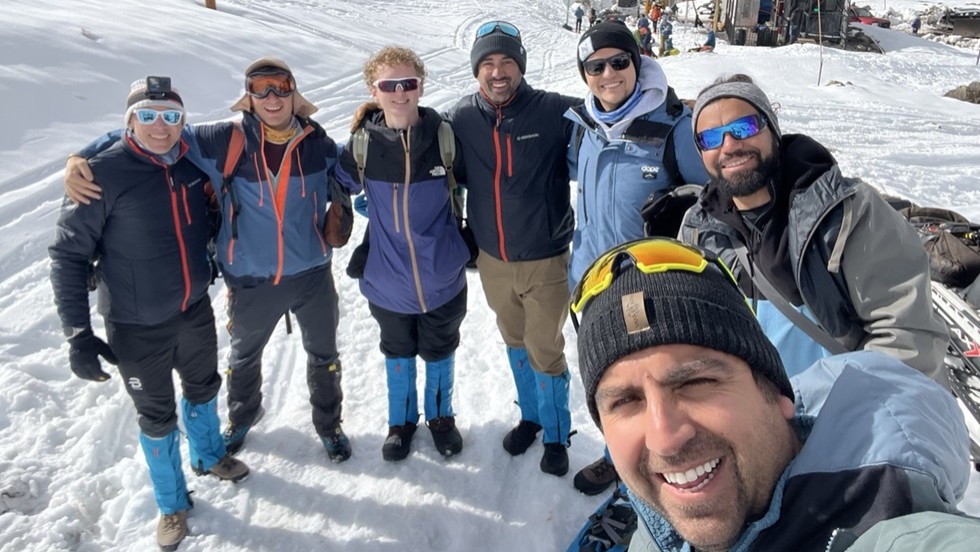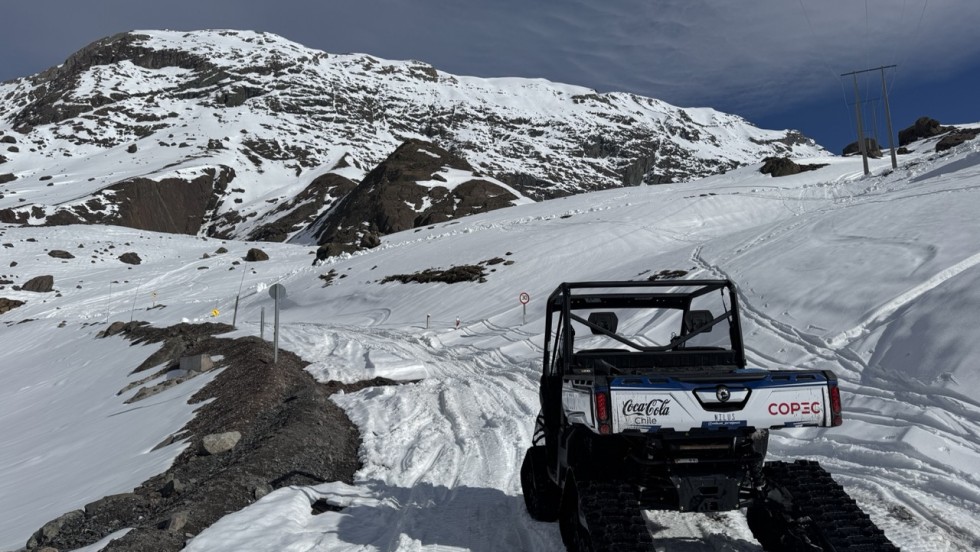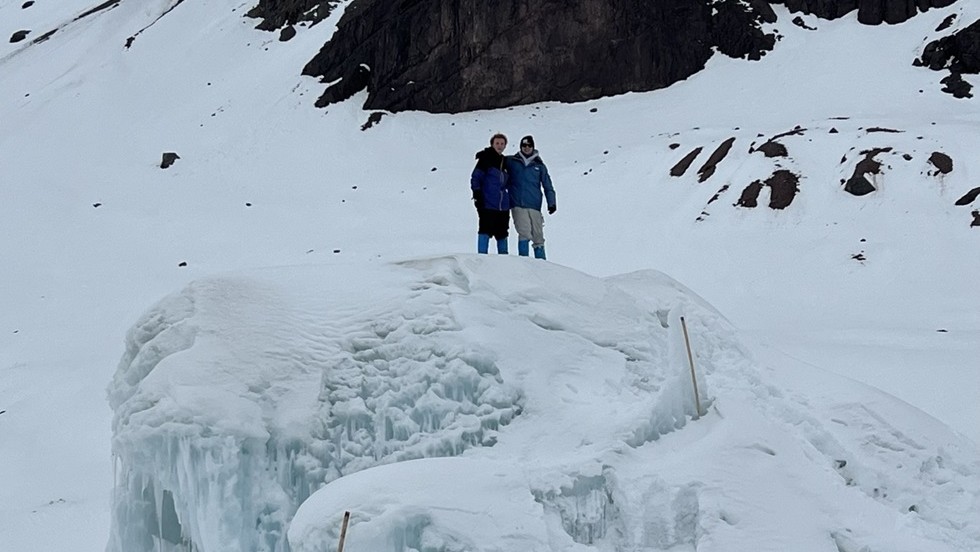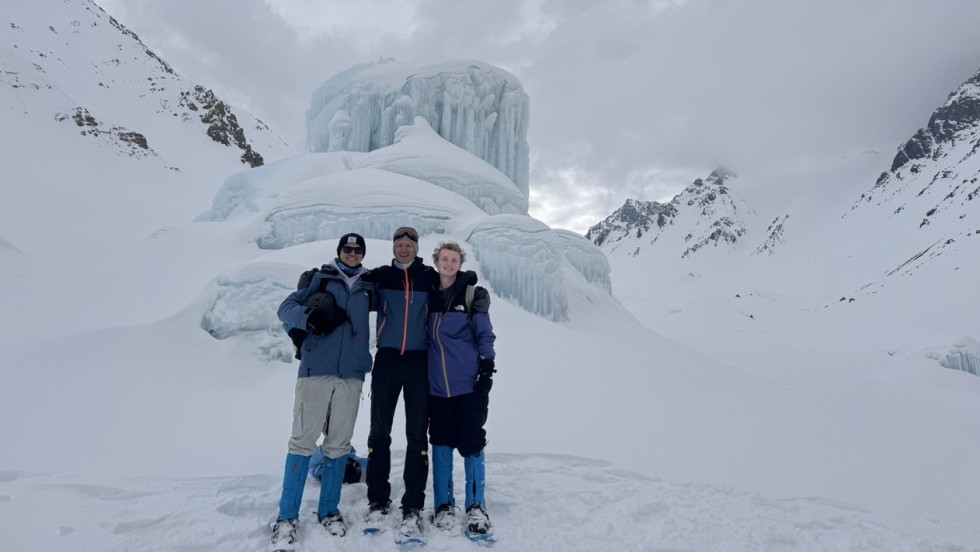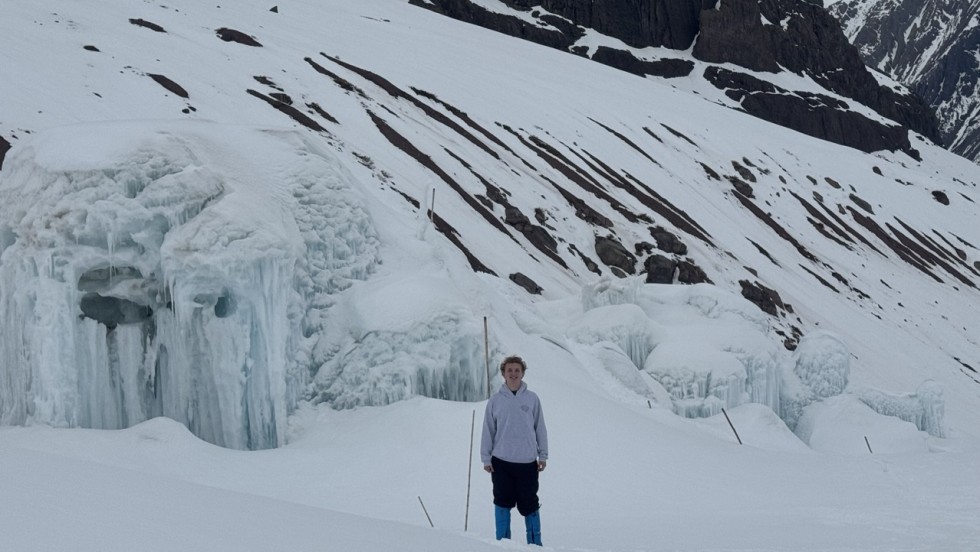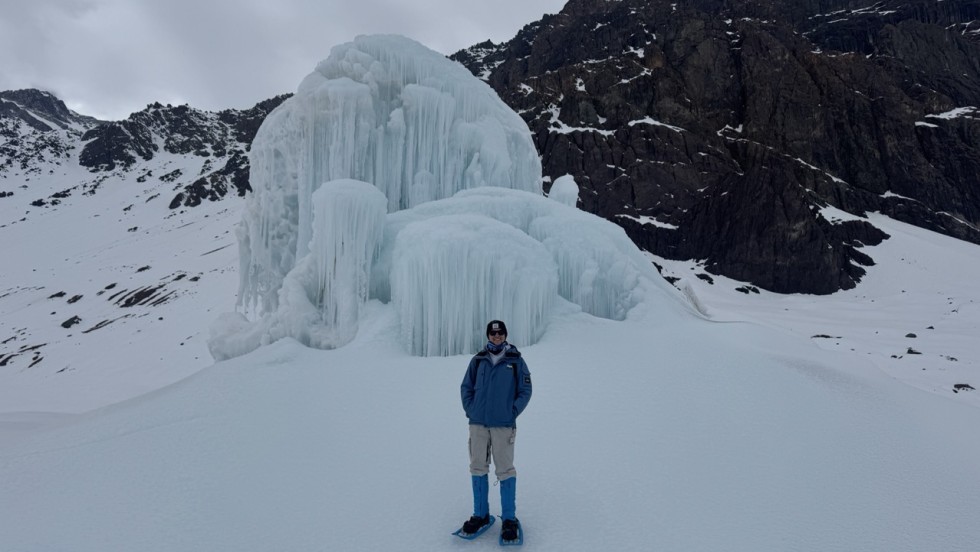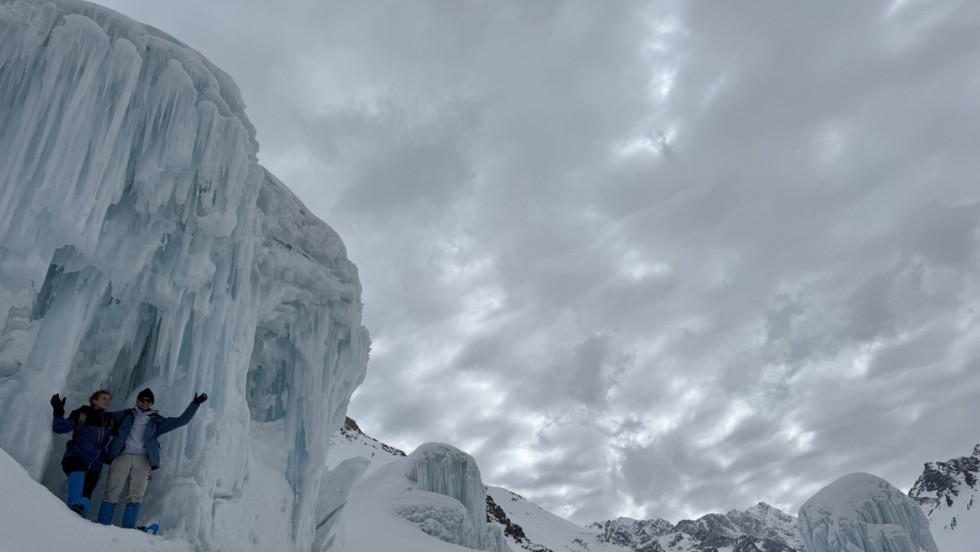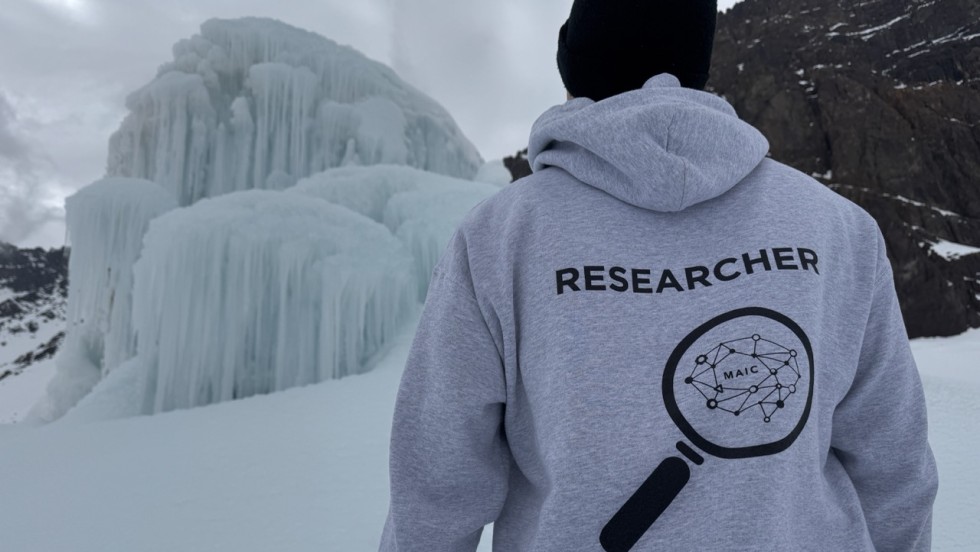MSOE students use AI to create man-made glaciers
This summer, computer science and machine learning students Ben Paulson and Brett Storoe traded in their laptops for snowmobiles in Santiago, Chile. The two saw their project come to life by witnessing the ice stupas they helped form with the power of AI through a partnership with Nilus, a Chilean-based startup dedicated to the conservation of water resources by utilizing AI to bring back glaciers.
The Nilus Project is focused on restoring high-mountain ecosystems by creating ice stupas. Ice stupas are conical, man-made glaciers that are used for storing winter water. They are formed by channeling water from higher altitudes through underground pipes, and then sprinklers spray water into subzero air to create these ice formations. In the summer when water is scarce, the ice melts to increase water supply for communities. The project is a nature-based solution to combat the effects of climate change.
The partnership with Nilus originated thanks to Dr. Ernesto Guerra Vallejos, adjunct assistant professor in the Rader School of Business. Guerra Vallejos connected Nilus with the MSOE AI Club, who formed a research group to focus on the analysis of climate data. The group was comprised of Sydney Balboni, Thomas Benzshawel, John Cisler, Paulson and Storoe. They worked on the project from October 2024 to April 2025. Through their work, they created an algorithm that can efficiently determine where glaciers could be built across Earth. This algorithm utilizes weather data to know when to open the sprinklers for optimal glacial growth. The group also created a customized Swarm Rag approach that allows meteorological experts to analyze changing weather data over years of large datasets.
Their work didn’t stop there. Over the summer, Paulson and Storoe continued working with Nilus to develop a website to show glacier data in real-time to both clients and the public. This is now available on the Nilus website, dashboard.nilus.eco.
During their summer trip in Chile, Paulson and Storoe visited the Nilus office and spent a day hiking and snowmobiling to see the ice stupas they had spent so many hours working on and had previously only seen as photos and data sets.
“It was surreal,” said Paulson. “The scale hits you—eight towers of ice, each 4–5 stories, with the constant hiss of the sprinklers. After a year of screens and plots, it was a reality check in the best way.”
This rewarding experience was fueled by MSOE courses and opportunities that prepared the AI Club research group to tackle the project.
“MSOE classes prepared me for this work by staying grounded in hands-on examples. We all felt well-prepared for these challenges given the labs and open problems we tackled each week across all our classes and the Deep Learning track,” said Paulson. “I’d say the most important aspect of MSOE’s culture is encouraging this type of work. Professors always encourage going the extra mile with projects outside of the classroom, and they even aid students pursuing these interests.”
This year, Storoe will continue development of the algorithm for his research capstone, focusing on the accurate determination of stupa volume from multiple camera angles. Paulson also will be mentoring a new MSOE AI Club research group focused both on the environmental impact of stupas by looking at satellite vegetation data, as well as developing the edge-deployed AI model on-site for determining when the sprinkler should spray water.
“I want to extend a huge thank-you to Nilus, Dr. Guerra Vallejos, and the MSOE AI-Club students who put in late nights to make this real. This is exactly the kind of mission-driven, hands-on work MSOE equips students to do,” said Paulson.
